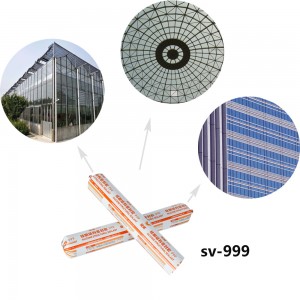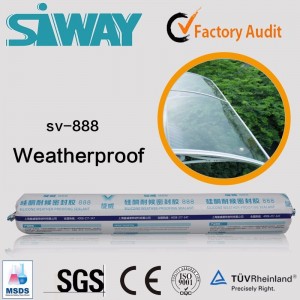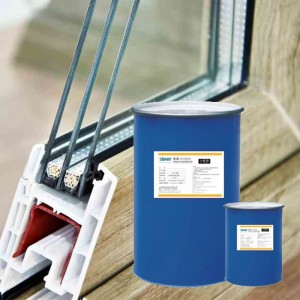Uses: Mainly used for structural bonding of glass and aluminum sub-frames, and also used for secondary sealing of hollow glass in hidden frame curtain walls.
Features: It can bear wind load and gravity load, has high requirements for strength and aging resistance, and has certain requirements for elasticity.

2.Silicone Weatherproof sealant
Uses: Seam sealing function (see Figure 1), to ensure air tightness, water tightness and other performances.
Features: It needs to withstand large changes in the width of the joint, requires high elasticity (displacement capacity) and aging resistance, does not require strength, and can be high or low modulus.

3.Ordinary silicone sealant
Uses: door and window joints, external wall caulking and other positions sealing.
Features: It can bear the change of the width of the joint, has a certain displacement capacity requirement, and does not require strength.

4.Secondary silicone sealant for insulating glass
Uses: Secondary sealing of the insulating glass to ensure the stability of the insulating glass structure.
Features: high modulus, not too soft, some have structural requirements.

5.Special purpose silicone sealant
Uses: Used for joint sealing with special requirements, such as fire prevention, mildew prevention, etc.
Features: It needs to have some special properties (such as mildew resistance, fire prevention, etc.).
Different uses of silicone sealants have their own different performance characteristics. Use the correct sealant. Because different uses of silicone sealants have their own different performance characteristics. In general, they cannot be used in place of each other at will. For example, use weather-resistant sealant instead of structural sealant, use door and window sealant instead of weather-resistant sealant, etc. Using the wrong glue may lead to serious quality accidents and safety accidents in the project.
Post time: Dec-15-2022

